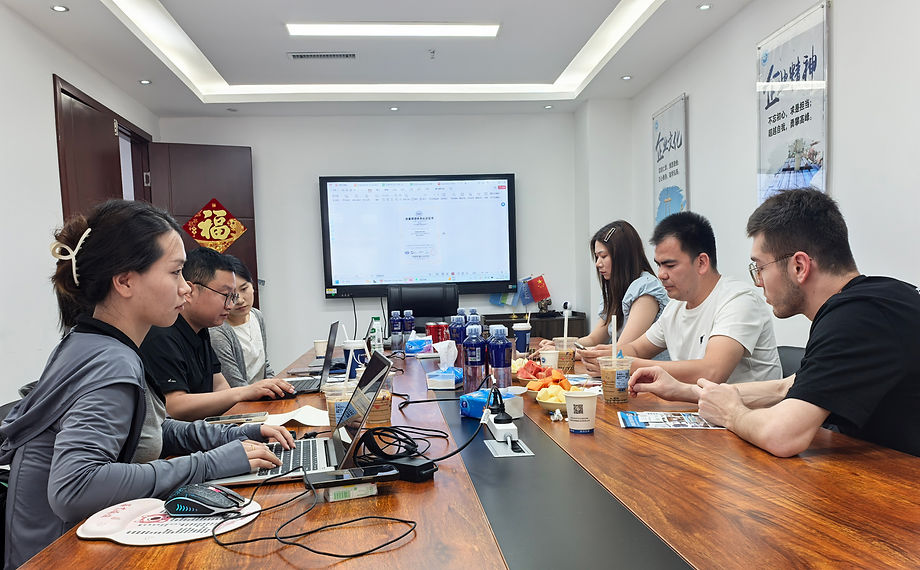
Cold-room Air Conditioner
Introduction:
The cold-room air conditioner is specially designed for cooling in cold-rooms to maintain low temperatures within insulated spaces, commonly used for storage of perishable goods. The temperature is the most important figure of the the cold-room AC. It can be 0°C to +10°C unit just for cold storage or keep fresh of goods, or -18°C to -30°C refrigeration units for freezing goods.

0°C to +10°C AC Units for Keeping Fresh:
-
Power Supply: 220V / 380V
-
Cooling Capacity: 3–8 kW for a small cold room 20–50 m³
-
Refrigerant: R404A, R134a, or R448A (eco-friendly options)
-
Noise Level: ≤55 dB (outdoor unit)
-
Keep Fresh:
-
0°C to +10°C (typically +2°C to +8°C for most fresh produce)
-
For keeping products fresh (like fruits, vegetables, flowers, dairy, beverages, or fresh meat), the cold-room air conditioner is designed to maintain chilled (not frozen) conditions.
-
-
Humidity Control
-
Maintains 85–95% relative humidity to prevent dehydration of products.
-
Important for leafy vegetables, fruits, and flowers.
-
-
Stable Temperature
-
Uses high-precision thermostats and microprocessor control to avoid temperature fluctuations.
-
-
Energy Efficiency
-
Equipped with inverter or scroll compressors for energy savings.
-
Optimized airflow design for uniform cooling.
-
-
Food-Grade Design
-
Anti-corrosion materials, washable panels, and food-safe coatings.
-
-
Optional Functions
-
Fresh air exchange to control CO₂ levels (for fruits & vegetables).
-
Ethylene filters for fruit and flower preservation.
-
Remote monitoring for temperature logging and alarms
-

-18°C to -30°C AC Units for Freezing:
-
Cooling Capacity: 4–10 kW for a samll Freezer Cold Room 20–50 m³
-
Power Supply: 380V 3-phase
-
Refrigerant: R404A or R507
-
Noise Level: ≤65 dB (outdoor unit)
-
For Freezing
-
-18°C to -30°C (some applications go down to -40°C for deep freezing) for meat, seafood, poultry, bakery products, Ice cream & frozen desserts, Pharmaceutical & vaccine storage (ultra-low temp), Cold chain logistics hubs, etc.
-
-
High-Capacity Compressors
-
Uses semi-hermetic or screw compressors for continuous low-temperature operation.
-
Multi-stage or cascade systems for very low temperatures.
-
-
Powerful Insulation
-
Requires thicker insulation panels (100–150 mm PU/PIR panels) to minimize heat gain.
-
Doors with heated frames to prevent frost buildup.
-
-
Defrost System
-
Electric or hot gas defrost to prevent evaporator coil icing.
-
-
Humidity & Frost Control
-
Humidity levels are lower than in fresh cold rooms (to prevent ice build-up and maintain frozen state).
-
-
Heavy-Duty Components
-
Evaporators with high airflow fans and anti-corrosion coatings.
-
Heavy-duty condensing units, often air-cooled or water-cooled.
-
-
Energy Optimization
-
Use of inverter technology, variable-speed fans, and eco-friendly refrigerants like R404A, R507, or CO₂ (R744).
-

How to Customize Your AC?
Customizing an air conditioner for a cold-room project involves tailoring the refrigeration system to meet specific temperature, humidity, load, and operational requirements of the client. It’s more than just selling a standard unit—suppliers often design a turnkey solution. Yes, we can also provide complete cold Rooms with air conditioning installed. Please check out the following steps for customized your cold-room ACs.
1. Project Requirement Collection
-
Purpose of cold room: fresh keeping (0~+10°C) or freezing (-18~-30°C)
-
Room size: length × width × height
-
Insulation thickness & material: PU/PIR panels (50–150 mm depending on temperature)
-
Location: indoor/outdoor climate, altitude (affects compressor selection)
-
Power supply: 220V single-phase or 380V three-phase
-
Operation mode: continuous / intermittent; single or multiple rooms
2. Load Calculation
We calculate the total heat load, which includes:
-
Product load (type, mass, temperature in/out)
-
Infiltration load (air leakage, door opening frequency)
-
People & lighting load
-
Heat transmission through walls, ceiling, floor
Example formula (simplified):
Q=Q1+Q2+Q3+Q4Q = Q_1 + Q_2 + Q_3 + Q_4Q=Q1+Q2+Q3+Q4
Where:
-
Q₁: Heat from product cooling/freezing
-
Q₂: Heat through structure (U × A × ΔT)
-
Q₃: Air exchange infiltration
-
Q₄: Miscellaneous (lighting, people, equipment)
3. Selection & Design
-
Compressor Unit: Select type (scroll, semi-hermetic, screw) & capacity
-
Evaporator: Airflow design to ensure uniform cooling
-
Refrigerant: R404A, R507, R448A, CO₂ (for low-GWP options)
-
Condenser: Air-cooled or water-cooled based on site conditions
-
Controls: Temperature controllers, sensors, defrost timers, remote monitoring
-
Optional features: humidity control, ethylene filter (for fresh produce), dual-temperature systems
4. Custom Engineering & Manufacturing
-
Build condensing units & evaporators per load calculation
-
Add special coatings (anti-corrosion for coastal areas, food-safe coatings inside room)
-
Integrate PLC or IoT monitoring if required
-
Provide customized electrical panels with overload, phase protection
5. Installation & Commissioning
-
Layout optimization for airflow & service space
-
Field piping (copper or stainless steel)
-
Electrical wiring & controls integration
-
Testing: vacuum, refrigerant charging, performance test, leak check
-
Training for operators
6. After-Sales Support
-
Spare parts supply
-
Maintenance contracts (especially for low-temperature systems)
-
Remote monitoring & troubleshooting options









